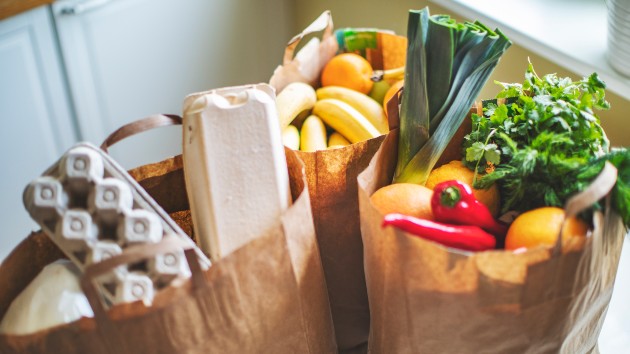
yulkapopkova/iStock
yulkapopkova/iStockBy Kelly McCarthy, ABC News
(NEW YORK) — Costs are climbing on groceries and staple goods both online and in-stores due to changes amid the pandemic, but there are a couple ways to offset the increase and find new ways to save.
Patrick Penfield, professor of practice-supply chain management at the Whitman School of Management for Syracuse University, told ABC News’ Good Morning America earlier this year that he expected prices to steadily rise for the next several months.
“We had a suspicion that prices were going to go up. But I don’t think we realized how bad it was going to be,” he said. “The whole supply chain is increasing and nobody wants to absorb that cost. So unfortunately the person or people that are going to bear it are the consumers.”
The price U.S. consumers pay for groceries is up 3.5% over the last 12 months, according to the U.S. Bureau of Labor Statistics’ February Consumer Price Index data. For a family of four, that could be as much as $500 more per year, the U.S. Department of Agriculture estimated for that family size.
Everything from cereal to dairy, meats and eggs have seen a spike in prices and analysts believe that on top of the pandemic factors like truck driver shortages and severe storms have only exacerbated the issue.
“I don’t think anybody realized — the magnitude of issues that we’re seeing within the supply chain right now,” Penfield added. “And that’s something that we’ll get through.”
Many major consumer-packaged goods have recently hiked prices on their popular products. Cheerios maker General Mills, for example, announced it’s raising prices to offset freight manufacturing and commodity prices.
Hormel has raised prices on products like Jennie-O ground turkey in light of higher grain costs to feed the poultry.
Even a jar of JIF peanut butter is pricier than last year, because the J.M. Smucker Company said its costs are “meaningfully higher.”
Experts also said there are ways to keep shopping costs low by stocking up and striking when the price is right.
“If you want to stay on budget, you’ve got to think about what you routinely use. And if you see it on sale, you certainly need to buy it in bulk,” Amy Keating, a registered dietitian who tests food for Consumer Reports, told GMA.
Additionally, she said to think outside the big box brands and shop for items on sale, as well as go check prices at smaller stores.
“Other grocery stores that you may have not even considered, like smaller groceries, even drugstores sometimes have sales,” Keating said.
Copyright © 2021, ABC Audio. All rights reserved.